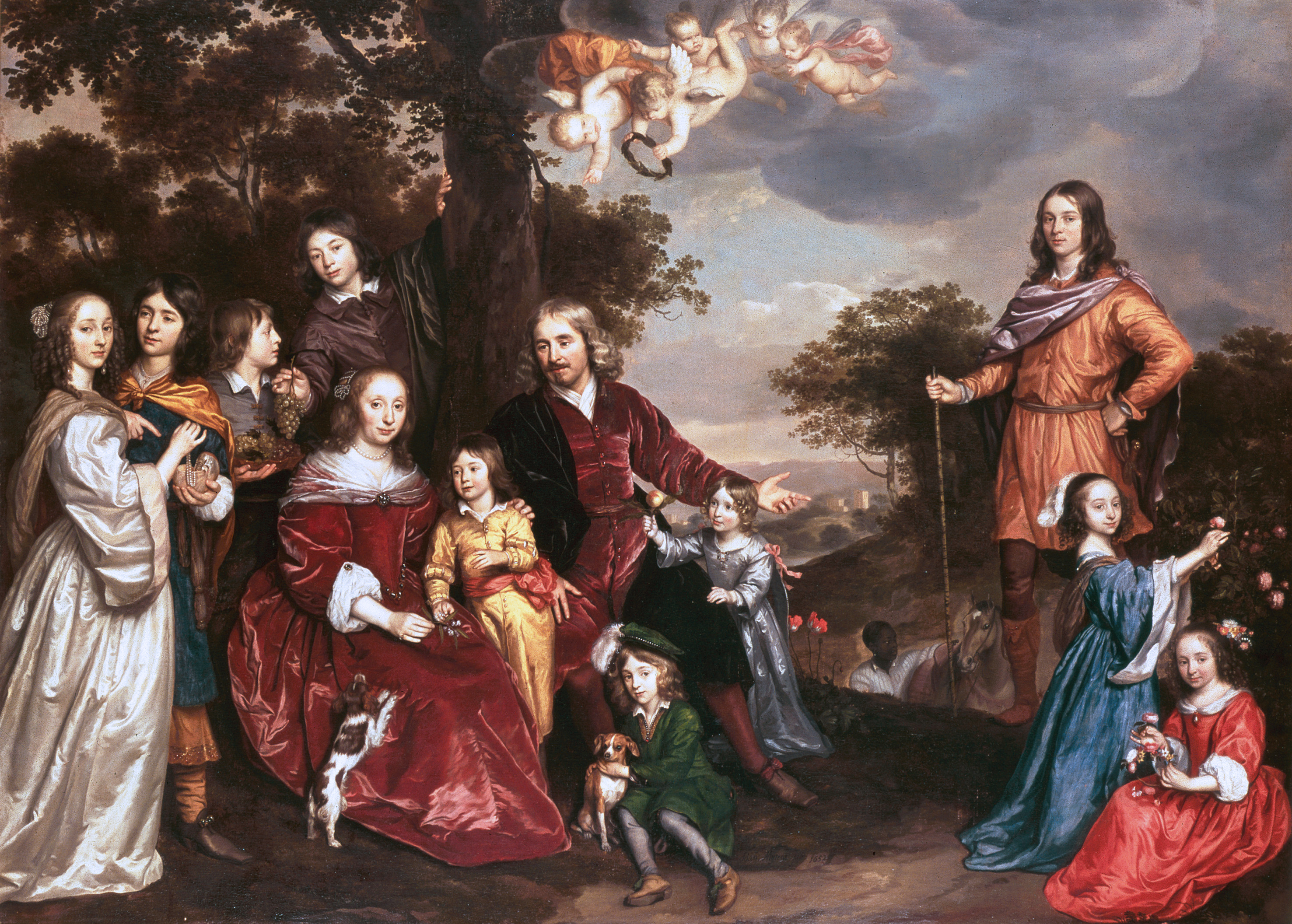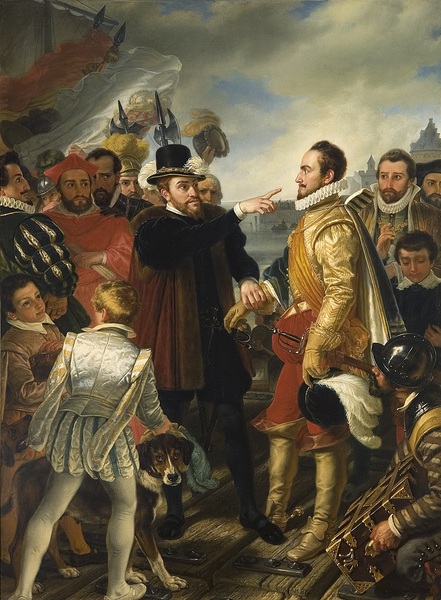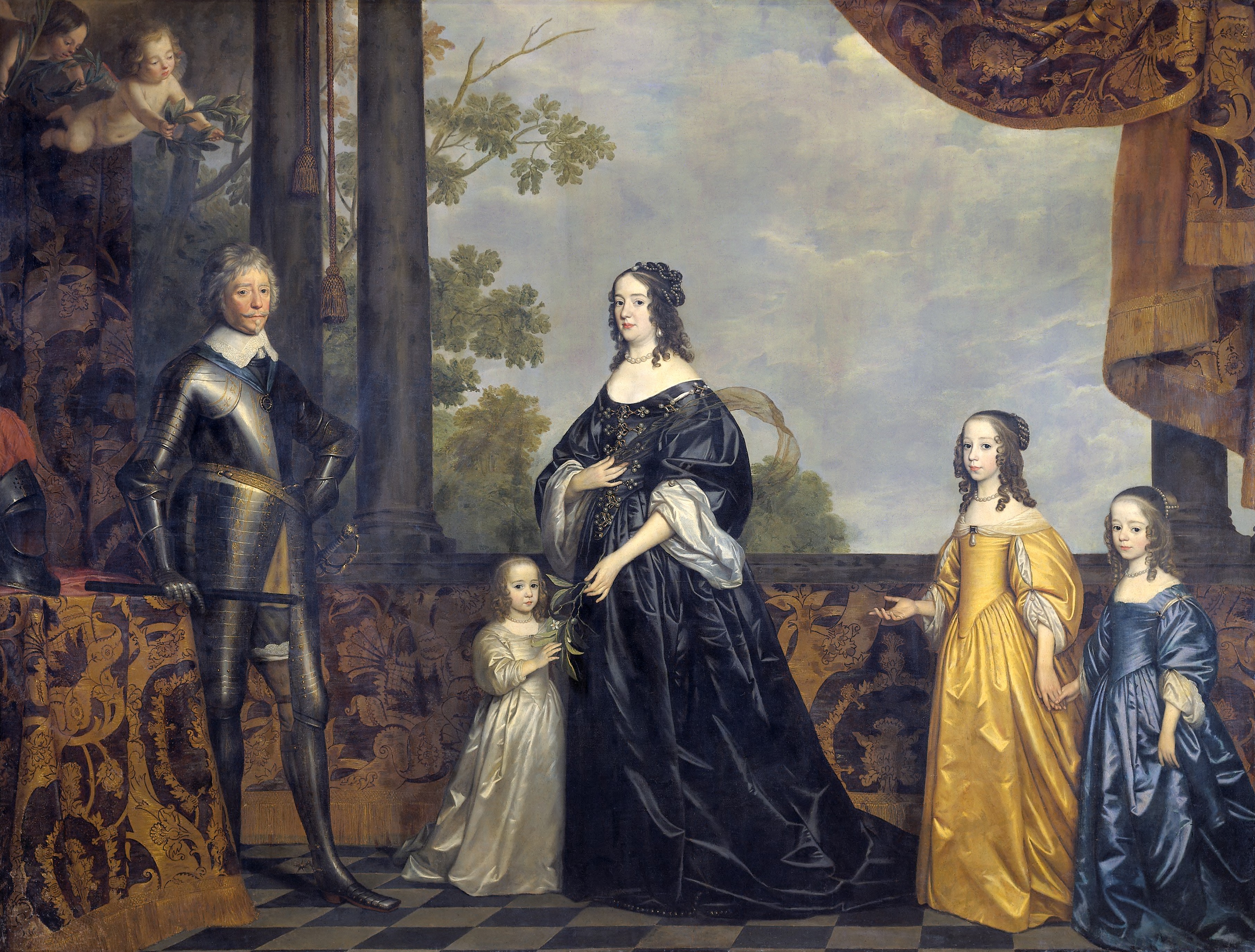|
Maria Of Orange-Nassau (1642–1688)
Maria of Nassau or Maria of Orange-Nassau (5 September 1642 – 20 March 1688) was a Dutch princess of the house of Orange and by marriage ''pfalzgräfin'' or countess of Palatinate-Simmern-Kaiserslautern, Simmern-Kaiserslautern. Life Maria was born in The Hague, the youngest daughter of Amalia of Solms-Braunfels and her husband Frederick Henry, Prince of Orange. Her father was already in his late fifties when she was born and died when she was only four. She was also the aunt of the future William III of England, William III, via her older brother William II, Prince of Orange, William II. In 1660 her family began negotiations for her to marry Charles II of Great Britain. However, in the end he opted to marry Catharine of Braganza to establish an anti-Spanish alliance with Portugal. A year later marriage negotiations with John Maurice, Prince of Nassau-Siegen began, but these also proved abortive. On 23 September 1666 in Kleve she married Louis Henry, Count Palatine of Simmern ... [...More Info...] [...Related Items...] OR: [Wikipedia] [Google] [Baidu] |
Johannes Mytens
Johannes Mytens or Jan Mijtens, or "Mytens" to the English (c.1614 – 24 December 1670) was a Dutch Golden Age painter, almost entirely as a portraitist. Mytens was born in The Hague. According to Houbraken, Johannes (Jan) Mijtens was trained by Anthony van Opstal and later by Nicolas van der Horst. Both of his uncles, Isaac Mijtens and Daniël Mijtens, were painters, and his son Cornelis became an engraver. [Baidu] |
Louis Philip, Count Palatine Of Simmern-Kaiserslautern
Louis Philip (German: Ludwig Philipp) (23 November 1602 – 6 January 1655) was the Count Palatine of Simmern-Kaiserslautern from 1610 until 1655. Philip acted as Administrator of the Electoral Palatinate between 1632 and 1648. Philip was born in Heidelberg, as the youngest son of Frederick IV, Elector Palatine and Countess Louise Juliana of Nassau, herself the eldest daughter of William the Silent and his third spouse Charlotte de Bourbon-Montpensier. After his father's death in 1610, Louis Philip inherited his territories around Simmern, Kaiserslautern and Sponheim. Philip was appointed as Administrator (Regent In a monarchy, a regent () is a person appointed to govern a state because the actual monarch is a minor, absent, incapacitated or unable to discharge their powers and duties, or the throne is vacant and a new monarch has not yet been dete ...) of the Electoral Palatinate after the 1632 death of the Elector Frederick, and held that post until the res ... [...More Info...] [...Related Items...] OR: [Wikipedia] [Google] [Baidu] |
William I, Count Of Nassau-Siegen
William I of Nassau-SiegenIn many sources he is called William I of Nassau(-Dillenburg) and in some sources of Nassau-Katzenelnbogen. He was born with the titles Count of Nassau, Vianden and Diez. Two years before his death, he obtained the right to hold the title Count of Katzenelnbogen, which meant that since then he held the official titles Count of Nassau, Katzenelnbogen, Vianden and Diez. It is incorrect to refer to him as the only reigning Count of Nassau, because the County of Nassau was divided into Nassau-Beilstein, Nassau-Siegen, Nassau-Weilburg and Nassau-Wiesbaden. Furthermore, there was the cadet branch of Nassau-Saarbrücken, which ruled the counties of Saarbrücken and Saarwerden. William ruled the County of Nassau-Siegen, which is erroneously called Nassau-Dillenburg in many sources. See note 2. (; 10 April 1487 – 6 October 1559), nicknamed the Elder () or the Rich (), was Count of Nassau-SiegenThe County of Nassau-Siegen is erroneously called ... [...More Info...] [...Related Items...] OR: [Wikipedia] [Google] [Baidu] |
Louise De Coligny
Louise de Coligny (23 September 1555 – 9 November 1620) was a princess consort of Orange as the fourth and last spouse of William the Silent. She was the daughter of Gaspard de Coligny, seigneur de Châtillon by his first wife, Charlotte de Laval. Biography Louise was born at Châtillon-sur-Loing into an old and powerful House of Coligny. Her parents saw to it that she received a humanist education. When she was sixteen, she married Protestant Charles de Téligny (1571). Both he and her father were murdered at the St. Bartholomew's Day massacre. Like her murdered father, she was a French Huguenot and after the massacre (August 1572 -Paris), she spent ten years in the Swiss Confederacy. Nicolas Mius, Governor of Marseille, worked for Louise de Coligny’s father Admiral Gaspard II de Coligny as an interpreter. On August 25, 1572, Nicolas Mius was a victim of the St. Bartholomew’s Day Massacre. On this day the Admiral told those with him “to save yourselves.” Everyon ... [...More Info...] [...Related Items...] OR: [Wikipedia] [Google] [Baidu] |
William The Silent
William the Silent or William the Taciturn (; 24 April 153310 July 1584), more commonly known in the Netherlands as William of Orange (), was the leader of the Dutch revolt against the Spanish Habsburg Netherlands, Habsburgs that set off the Eighty Years' War (1568–1648) and resulted in the formal independence of the Dutch Republic, United Provinces in 1648. Born into the House of Nassau, he became Prince of Orange in 1544 and is thereby the founder of the House of Orange-Nassau, Orange-Nassau branch and the ancestor of the monarchy of the Netherlands. In the Netherlands, he is also known as Father of the Nation, Father of the Fatherland (; ). A wealthy nobleman, William originally served the Habsburgs as a member of the court of Margaret of Parma, governor of the Spanish Netherlands. Unhappy with the centralisation of political power away from the local estates and with the Spanish persecution of Dutch Protestants, William joined the Dutch uprising and turned against his fo ... [...More Info...] [...Related Items...] OR: [Wikipedia] [Google] [Baidu] |
Nine Years' War
The Nine Years' War was a European great power conflict from 1688 to 1697 between Kingdom of France, France and the Grand Alliance (League of Augsburg), Grand Alliance. Although largely concentrated in Europe, fighting spread to colonial possessions in the Americas, India, and West Africa. Related conflicts include the Williamite war in Ireland, and King William's War in North America. Louis XIV of France emerged from the Franco-Dutch War in 1678 as the most powerful monarch in Europe. Using a combination of aggression, annexation, and quasi-legal means, he then set about extending his gains to strengthen France's frontiers, culminating in the 1683 to 1684 War of the Reunions. The Truce of Ratisbon guaranteed these new borders for twenty years, but concerns among European Protestant states over French expansion and Edict of Fontainebleau, anti-Protestant policies led to the creation of the Grand Alliance, headed by William III of England, William of Orange. In September 1688 ... [...More Info...] [...Related Items...] OR: [Wikipedia] [Google] [Baidu] |
Pneumonia
Pneumonia is an Inflammation, inflammatory condition of the lung primarily affecting the small air sacs known as Pulmonary alveolus, alveoli. Symptoms typically include some combination of Cough#Classification, productive or dry cough, chest pain, fever, and Shortness of breath, difficulty breathing. The severity of the condition is variable. Pneumonia is usually caused by infection with viruses or bacteria, and less commonly by other microorganisms. Identifying the responsible pathogen can be difficult. Diagnosis is often based on symptoms and physical examination. Chest X-rays, blood tests, and Microbiological culture, culture of the sputum may help confirm the diagnosis. The disease may be classified by where it was acquired, such as community- or hospital-acquired or healthcare-associated pneumonia. Risk factors for pneumonia include cystic fibrosis, chronic obstructive pulmonary disease (COPD), sickle cell disease, asthma, diabetes, heart failure, a history of smoking, ... [...More Info...] [...Related Items...] OR: [Wikipedia] [Google] [Baidu] |
Bad Kreuznach
Bad Kreuznach () is a town in the Bad Kreuznach (district), Bad Kreuznach district in Rhineland-Palatinate, Germany. It is a spa town, known for its medieval bridge dating from around 1300, the Alte Nahebrücke (Bad Kreuznach), Alte Nahebrücke, which is one of the few remaining bridges in the world with buildings on it.Brückenhäuser, Alte Nahebrücke, Neustadt , Bad Kreuznach o www.romantic-germany.info (in English). Retrieved 14 June 2018 The town is located in the Nahe (wine region), Nahe River wine region, renowned both nationally and internationally for its wines, especially f ... [...More Info...] [...Related Items...] OR: [Wikipedia] [Google] [Baidu] |
Oranienbaum, Germany
Oranienbaum () is a former town and a former municipality in the district of Wittenberg, in Saxony-Anhalt, Germany. Since 1 January 2011, it is a District () of the town of Oranienbaum-Wörlitz. It is situated south of the Elbe, east of Dessau. History The former settlement of Nischwitz was renamed in 1673 after Countess Henriette Catherine of Nassau, a scion of the House of Orange-Nassau () and princess consort of the then ruling Prince John George II of Anhalt-Dessau. From 1683 on, the Countess had the Oranienbaum Palace erected according to plans by the Dutch architect Cornelis Ryckwaert. The parks are today included within the Dessau-Wörlitz Garden Realm, a UNESCO World Heritage Site since 2000. Sights * Oranienbaum Palace, park and Chinese garden with pagoda * Baroque The Baroque ( , , ) is a Western Style (visual arts), style of Baroque architecture, architecture, Baroque music, music, Baroque dance, dance, Baroque painting, painting, Baroque sculpture, sculptur ... [...More Info...] [...Related Items...] OR: [Wikipedia] [Google] [Baidu] |
Countess Henriette Catherine Of Nassau
Henriette Catherine of Nassau ( Dutch: ''Henriëtte Catharina,'' German: ''Henriette Katharina''; 10 February 1637 – 5 November 1708) was princess consort of Anhalt-Dessau by marriage to John George II, Prince of Anhalt-Dessau, and regent of Anhalt-Dessau from 1693 to 1698 during the minority (and then the absence) of her son Leopold I, Prince of Anhalt-Dessau. Life Henriette was born in The Hague as a member of the House of Orange-Nassau, being the seventh of nine children born to Frederick Henry, Prince of Orange and Amalia of Solms-Braunfels. Some of her siblings died in childhood. Henriette and four other siblings lived to adulthood, her surviving siblings were: William II, Prince of Orange, Luise Henriette of Nassau, Albertine Agnes of Nassau and Maria of Nassau. Princess consort of Anhalt-Dessau The Thirty Years War had left Germany in ruins but the Netherlands under the reign of Henriette's father, Frederick Henry, had made great progress since the assassination ... [...More Info...] [...Related Items...] OR: [Wikipedia] [Google] [Baidu] |
Schloss Oranienstein
Schloss Oranienstein is one of the palaces of the House of Orange-Nassau, sited at Diez on the Lahn. It was built on the ruins of Dierstein Abbey between 1672 and 1681 for Countess Albertine Agnes of Nassau after she was widowed. After the French Republican invasion destroyed the Dutch Republic in 1795, stadtholder William V, Prince of Orange and his family first fled to England, before settling in Oranienstein for several years. Here, William and his son William Frederick issued the Oranienstein Letters, recognising the Batavian Republic and renouncing their stadtholderate and territorial claims in the Netherlands in return for financial and territorial compensation elsewhere, granted by First Consul Napoleon Bonaparte. In 1806, the castle fell to the newly formed Grand Duchy of Berg. Napoleon auctioned off the castle's entire contents in 1811. After Napoleon's defeat, the Congress of Vienna assigned Oranienstein to the Duchy of Nassau. Following Nassau's defeat of the in ... [...More Info...] [...Related Items...] OR: [Wikipedia] [Google] [Baidu] |
Countess Albertine Agnes Of Nassau
Albertine Agnes of Nassau (9 April 1634 – 26 May 1696), was the regent of Friesland, Groningen and Drenthe during the minority of her son Henry Casimir II, Count of Nassau-Dietz, between 1664 and 1679.Geert H. Janssen, Albertine Agnes van Oranje, in: Digitaal Vrouwenlexicon van Nederland. URL: http://resources.huygens.knaw.nl/vrouwenlexicon/lemmata/data/AlbertineAgnes 7/04/2016/ref> She was the sixth child and fifth daughter of stadtholder Frederick Henry, Prince of Orange and Amalia of Solms-Braunfels. Life Albertine Agnes was born in The Hague and was the sixth of nine children born to her parents. Some of her siblings died in childhood. Albertine and four other siblings lived to adulthood. Her surviving siblings were: William II, Prince of Orange, Luise Henriette of Nassau, Henriette Catherine of Nassau and Mary of Nassau. In 1652 she married her second-cousin, William Frederick, Prince of Nassau-Dietz. Regency After the death of her husband in 1664, she beca ... [...More Info...] [...Related Items...] OR: [Wikipedia] [Google] [Baidu] |







